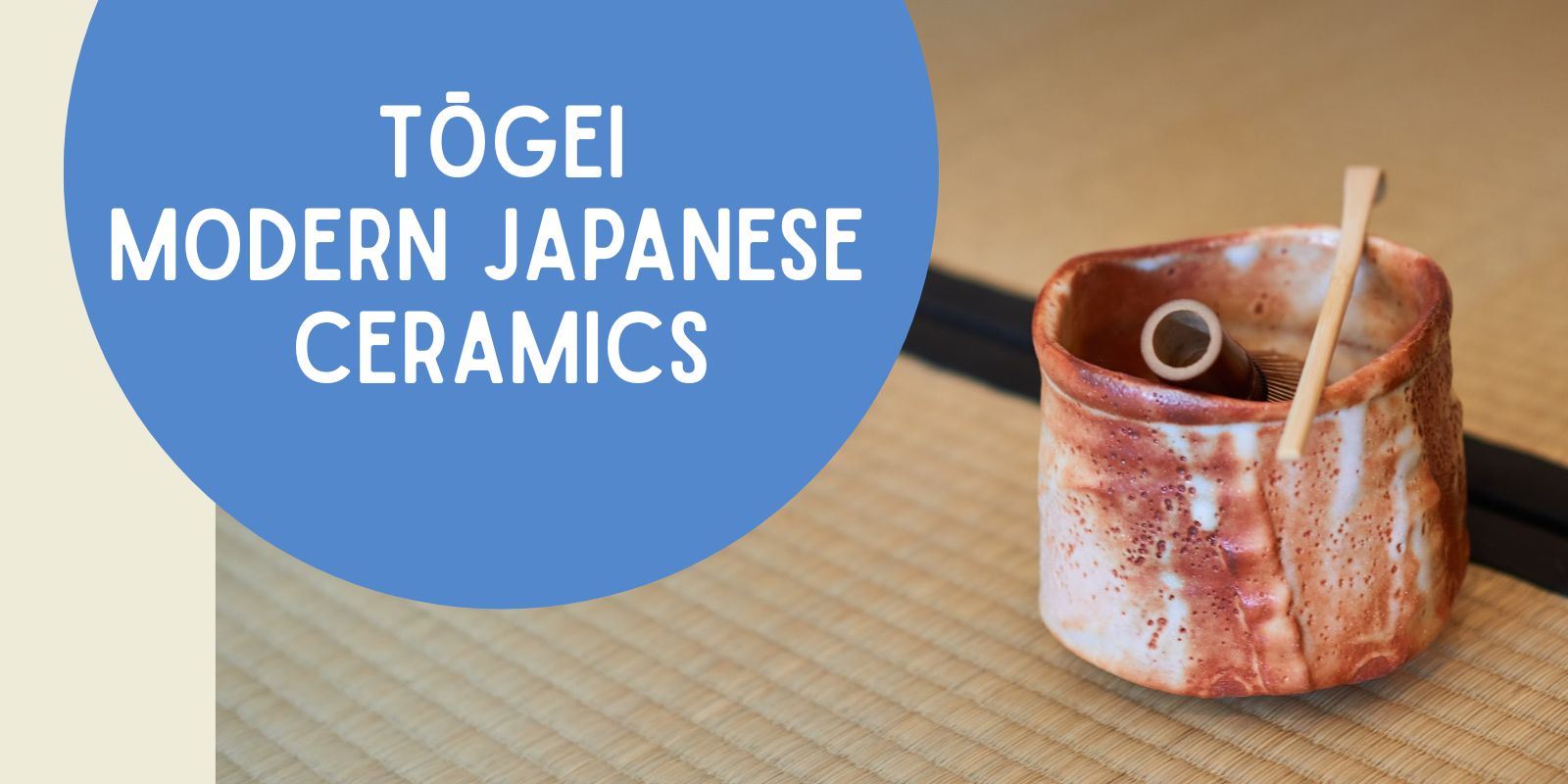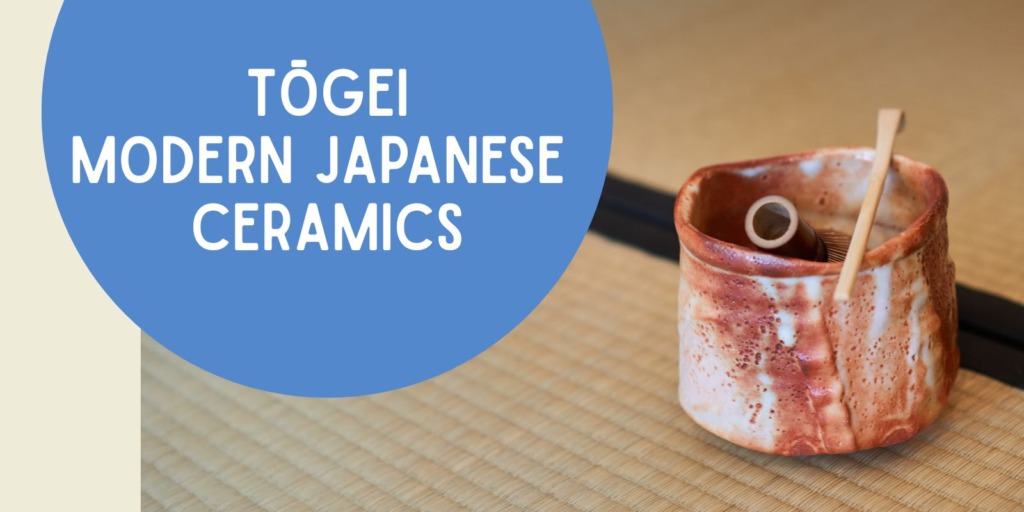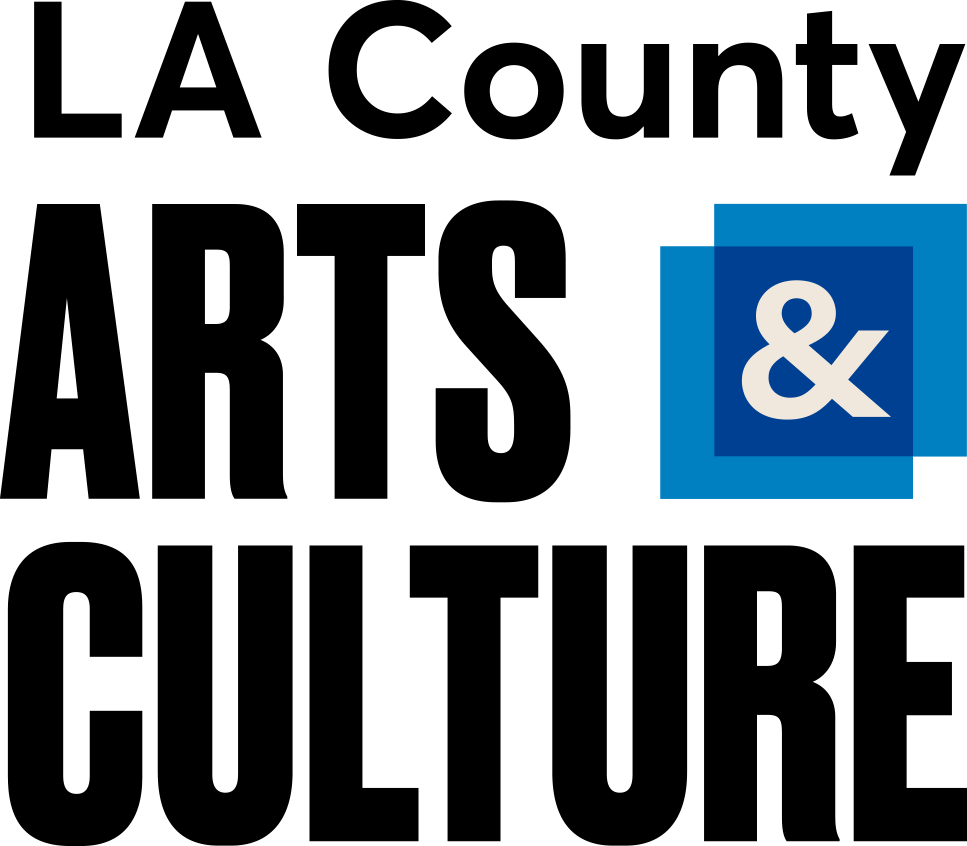
•
| On View: | June 13, 2026–January 4, 2027 |
| Opening Reception: | Saturday, June 13, 2026, 4:00–6:00 PM |
Tōgei: Modern Japanese Ceramics – Exhibition Overview
Tōgei: Modern Japanese Ceramics explores Japan’s ceramic tradition and traces its evolution from functional wares to modern artistic expression.
Japan’s ceramic tradition is both ancient and revered, with several thousand potters making a living from their craft at present. In part, the enduring patronage for pottery is due to its intimate connection with widely practiced arts, such as tea ceremony (chanoyu), flower arrangement (ikebana), incense ceremony (kōdō), as well as with cuisine and drink. Elite sushi restaurants in Japan commission plates and bowls by contemporary ceramists to complement the season and enhance the colors and textures of their food. This exhibition at AMOCA will look at how utilitarian objects are evolving for a modern lifestyle. We will explore how, from the late 1940s onward, groups of artists left utility behind and adopted sculpture as direct personal expression to promote the public perception of ceramics as high art.
Curated by Hollis Goodall, this exhibition features eighty works presented categorically in zones dedicated to flower vessels, tea utensils, sake flasks and cups, dining accouterments, incense containers and burners, sculptural boxes, and a section devoted to ceramics as pure sculpture. Each zone will explicate how the modest, wabi-sabi works seen in traditional-style Japanese pottery objects may simultaneously be understood as expressive contemporary objects through form, gesture, and creative reengineering of pre-modern glazes. Some context for these changes stems from the growing number of foreign collectors of contemporary Japanese ceramics. Many renowned potters presented in this exhibition have created their most experimental works for the larger spaces found in non-Japanese homes.
The attitude underlying the Japanese production of utilitarian ceramics-making distinctly contrasts with ceramics from other countries. Japanese potters consider the works incomplete until they debut as receptacles for tea, flowers, or incense. The idea of “one time, one place” (ichigo ichie)—a unique moment for seasonal flowers or gatherings for tea or food by people with specific interests and tastes, feasting on a selection of vegetables or fish whose season will pass in a brief period—underlies many aesthetic visions in Japan. A collector’s arrangement of flowers, thoughtfully selected arrays of utensils for a tea ceremony, or the scent, colors, and flavors of incense and food chosen for a specific meeting tune the potters’ purpose toward how they encourage the clay to speak. Many clay sculptors make a living by producing tea, drink, or food wares, turning to sculpture as a locus of self-expression. Once renowned, they may leave utilitarian wares behind. A few included artists have started as sculptors, working their way into ceramics from art training, or remaining sculptural artists with no connection to the clay world other than their medium.
Selections come from the collections of the AMOCA, Pomona; Scripps College, Claremont; the Mingei Museum in San Diego; and six private collectors in Los Angeles and San Diego. The works will reveal how certain groups of potters developed a modernist outlook in the mid-twentieth century, their experiments eventually producing a renaissance in ceramics design at the end of the twentieth and beginning of the twenty-first centuries. Artists of this generation include the heroic Suzuki Gorō, whose Oribe Chair entered AMOCA’s collection in 2021 and whose teapot joined the Kamm Teapot Foundation in 2019. Precursors include Hamada Shōji, the folk art master, and Yagi Kazuo, who established the area of contemporary-style ceramics and sculpture at the Kyoto University of the Arts. Yanagihara Mutsuo, from the generation following Yagi, carries modernist overglaze enamel sculpted vessels up to the moment as an alternate strand of modernism whose source is, again, the Kyoto University of the Arts. Most recent works include those by women who trained at art universities, having found it difficult to pierce the insular world of traditional ateliers.
This will be the first exhibition in half a century of modern and contemporary Japanese ceramics in eastern Los Angeles County, providing a rare chance for many to see the range of this unique facet within modern and contemporary ceramic art.
Exhibition Curator: Hollis Goodall
Tōgei: Modern Japanese Ceramics will be on view in the Julianne & David Armstrong Gallery at AMOCA June 13, 2026–January 4, 2027.
Artists
Emiko Asada
Shūhei Fujioka
Hideki Gotō
Shōji Hamada
Machiko Hashimoto
Yoshitaka Hasu
Shigemasa Higashida
Ichirō Hori
Kayoko Hoshino
Shōgo Ikeda
Susumu Ikuta
Osamu Inayoshi
Jun Isezaki
Hidehito Itō
En Iwamura
Yukiya Izumita
Katsumi Kakō
Ryūichi Kakurezaki
Miraku Kamei
Tōyō Kaneshige
Masanao Kaneta
Yasukage XIV Katō
Kanjirō Kawai
Rikizō Kawakami
Shinobu Kawase
Kōzo Kawashima
Idehara Keiichi
Kawabata Kentarō
Kaoru Kimata
Yasuhara Kimei
Kennin Kishimoto
Rosanjin Kitaōji
Hidetoshi Kōchi
Ryōji Koie
Shōko Koike
Yūzō Kondō
Takahirō Kondō
Kiyoko Kōyama
Kurouemon Kumano
Masahiro Maeda
Keita Matsunaga
Ken Matsuzaki
Shōzō Michikawa
Ken Mihara
Kimiyo Mishima
Kyūwa Miwa
Ryūsaku Miwa
Tadashi Mori
Taimei Morino
Takuma Murakoshi
Takuo Nakamura
Jun Nishida
Tadashi Nishihata
Nishigawara Nobuhito
Mineo Okabe
Hiromi Okumura
Takahashi Rakusai
Sugimoto Sadamitsu
Shinbei XII Sakakura
Satoshi Satō
Katsunori Sawa
Kiyotsugu Sawa
Tatsuzō Shimaoka
Keiichi Shimizu
Sayaka Shingu
Kawase Shinobu
Koike Shoko
Gorō Suzuki
Rakusai V Takahashi
Nami Takahashi
Jun Takegoshi
Kōichi Tamura
Tomomi Tanaka
Shinya Tanoue
Yasokichi IV Tokuda
Asuka Tsuboi
Seimei Tsuji
Shirō Tsujimura
Yoshitaka Tsuruta
Hiroyuki Wakimoto
Kazuo Yagi
Hikaru Yamada
Seigan Yamane
Mutsuo Yanagihara
Masaomi Yasunaga
Hasu Yoshitaka
Exhibition Acknowledgments
Thanks to our exhibition sponsors!
Supporter Sponsors:
Priscilla and Nelson Gibbs
Raulee Marcus
Tim and Maryanne Mayeda
Suzy and John Sasaki
Friend Sponsor:
Alexandra and Scott Ehrlich
Nick Hamatake and Kenneth Mariash
Chris Walther and Susan Stockton
This exhibition is funded, in part, grants from the Dew Foundation, the Ralph M. Parsons Foundation, and by support from the Los Angeles County Board of Supervisors through the Department of Arts and Culture.
You can sponsor this exhibition too! Find out more about our sponsorship levels and benefits in the Tōgei exhibition summary.
Want to sponsor an entire year of exhibitions? Contact Jenifer Fleming or call her at (909) 865-3146 x3, to learn more.
Bring Some Culture to Your Inbox
399 N Garey Ave Pomona, CA 91767
909.865.3146 | info@amoca.org
The museum is open Fridays, Saturdays, and Sundays, 11 AM–4 PM. Plan your visit by clicking here.
For information about Ceramics Studio hours and availability, please click here for the Ceramics Studio.



